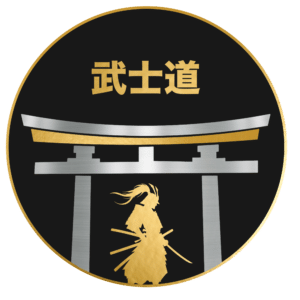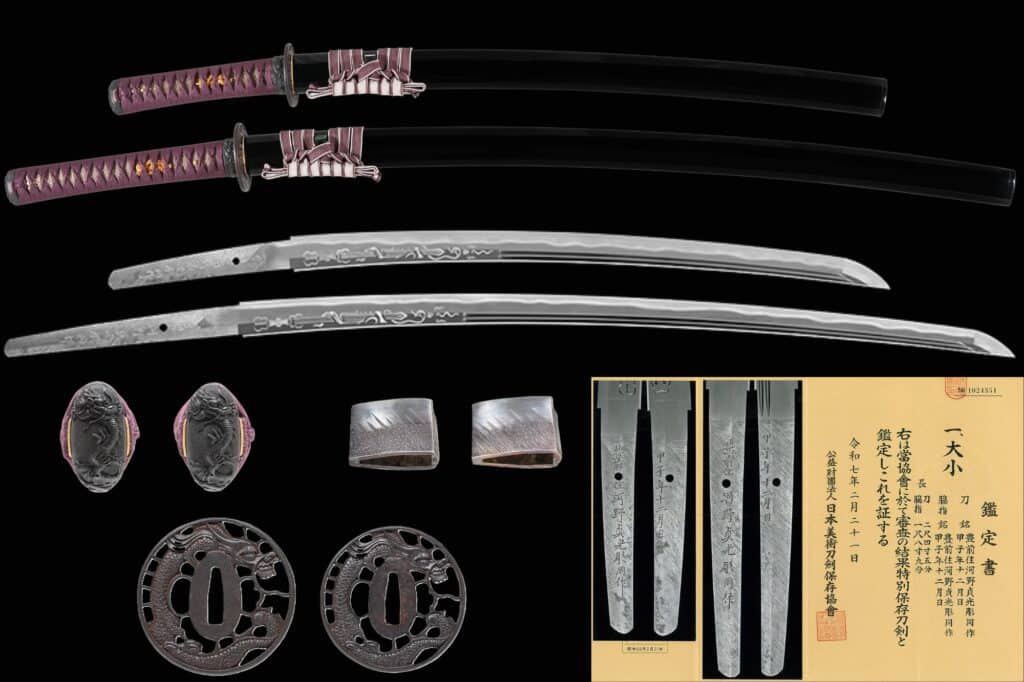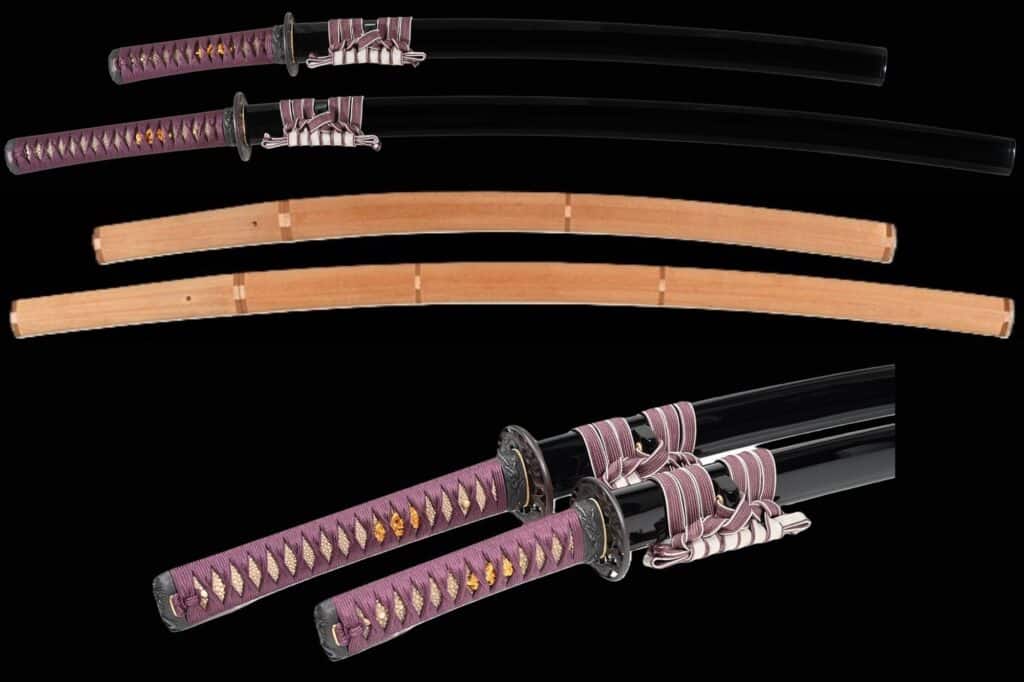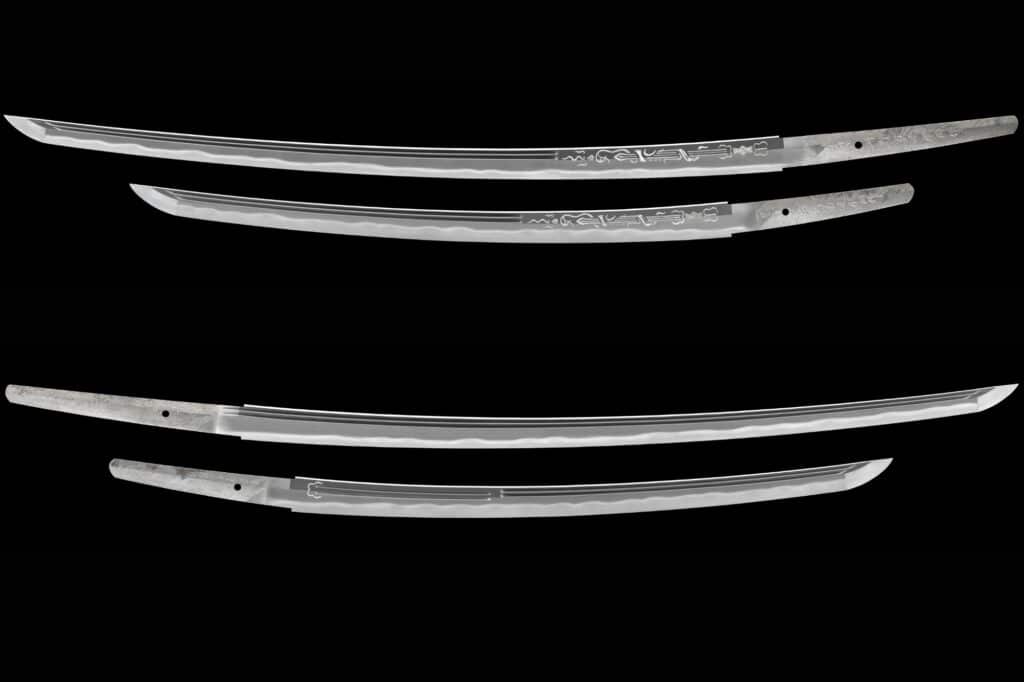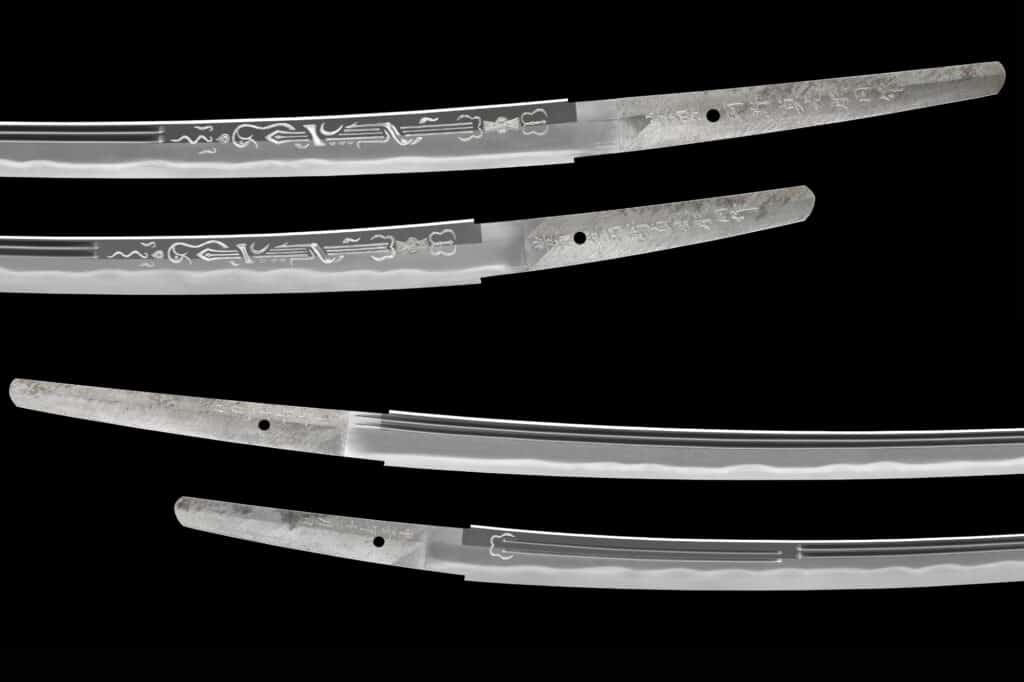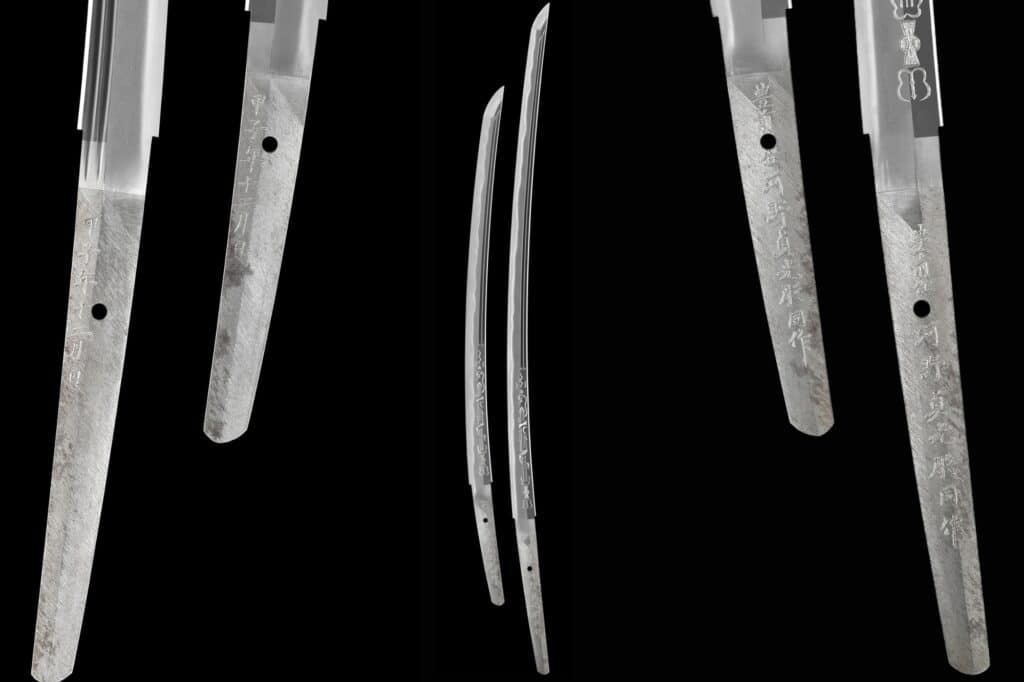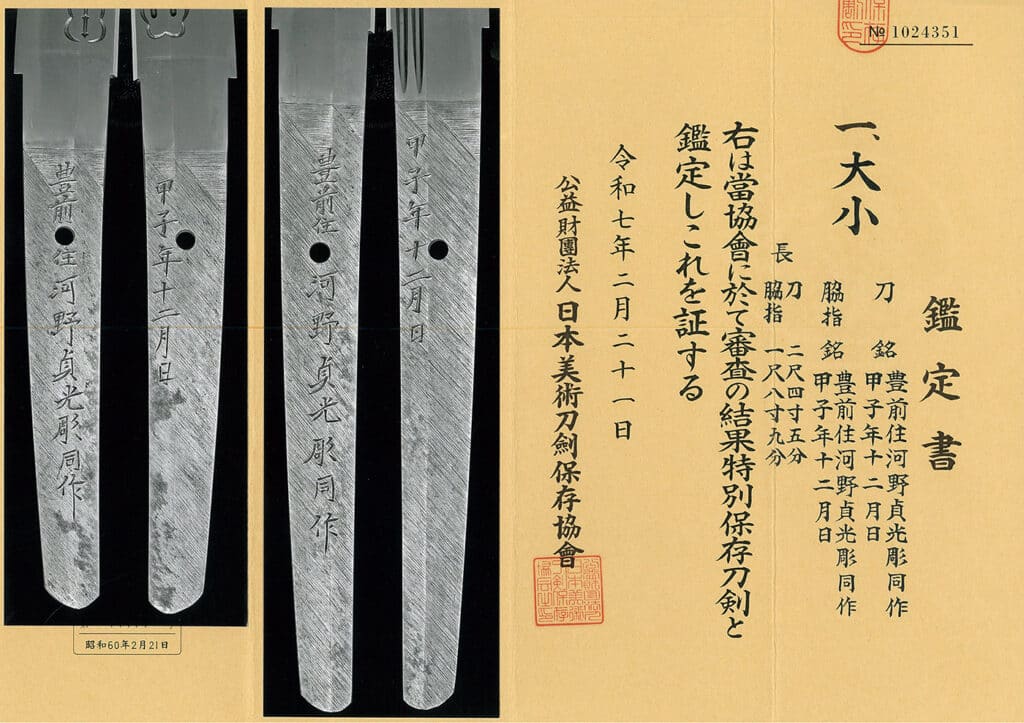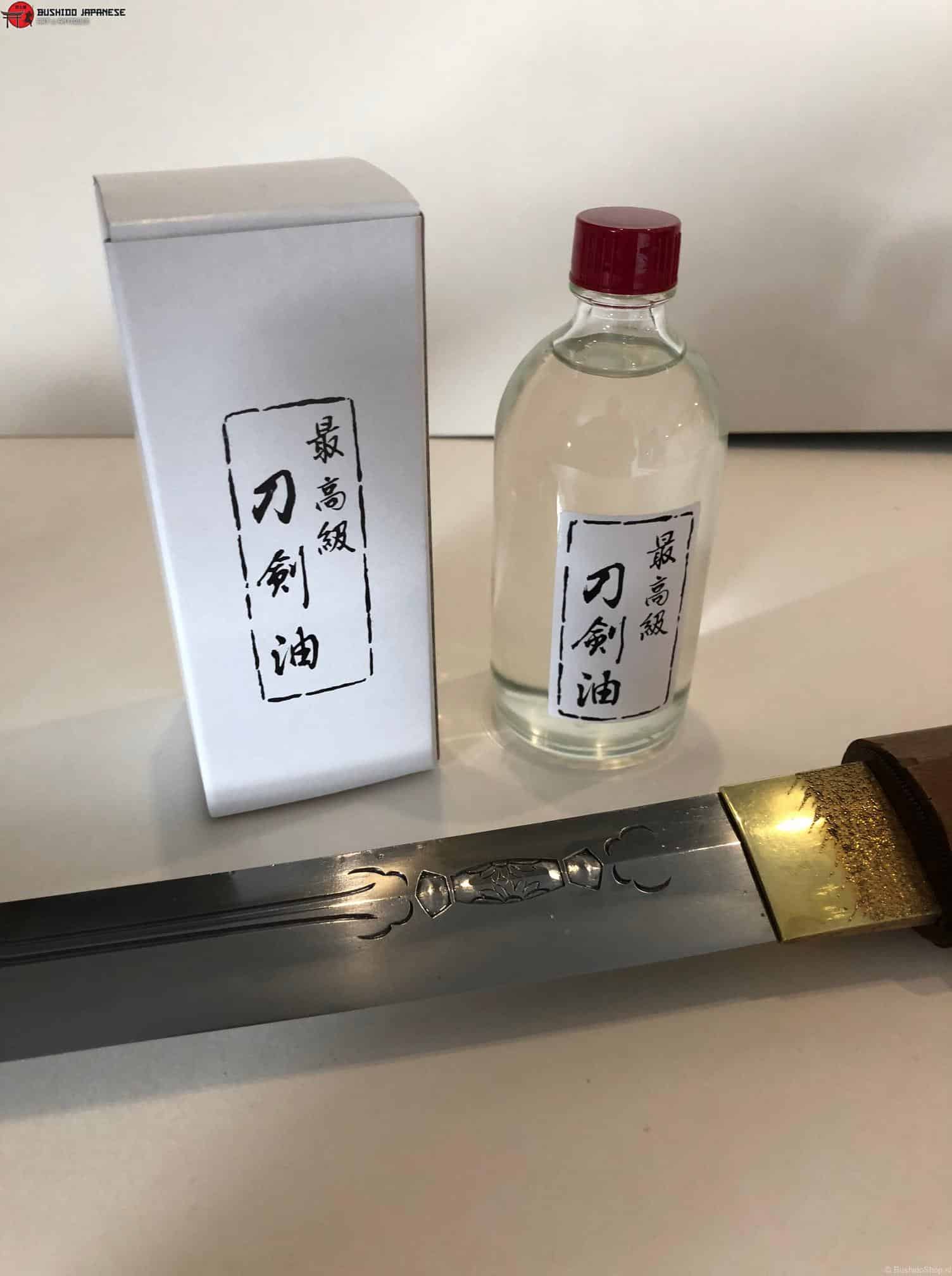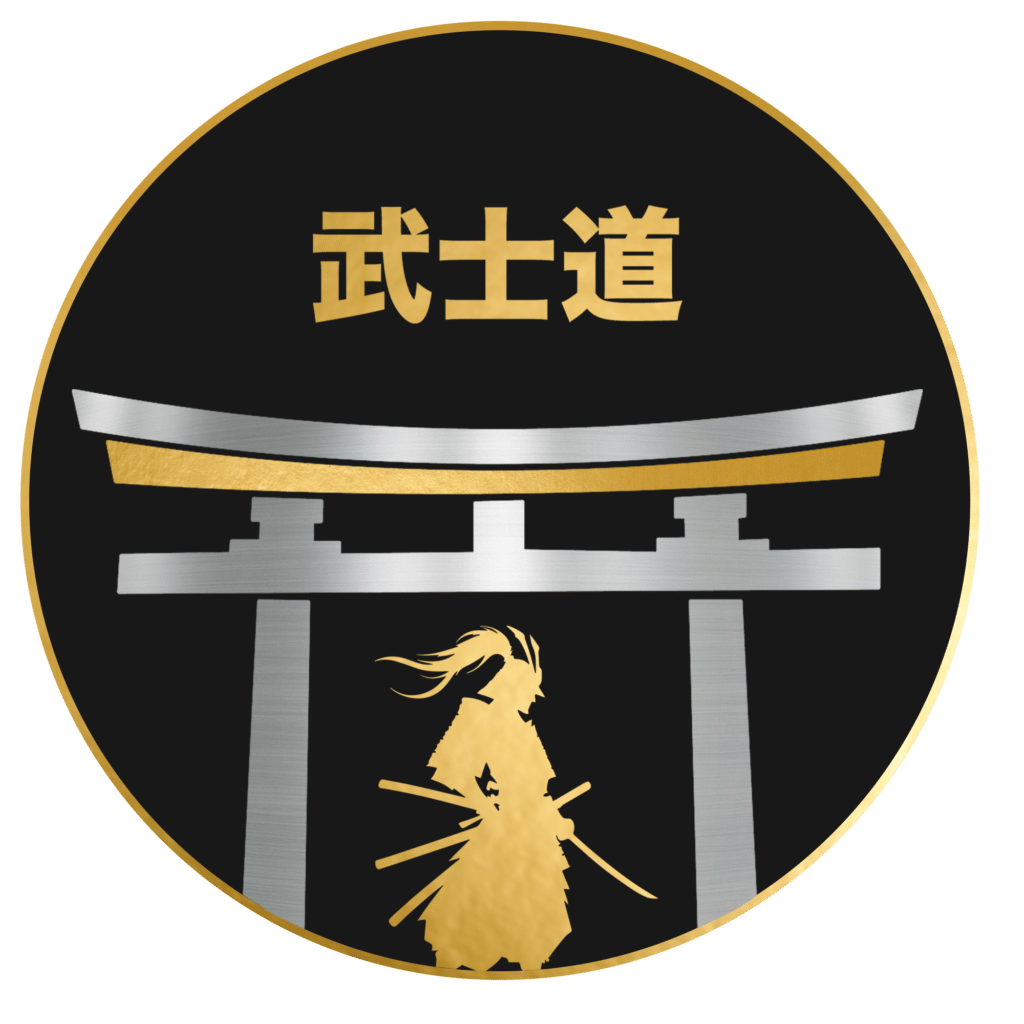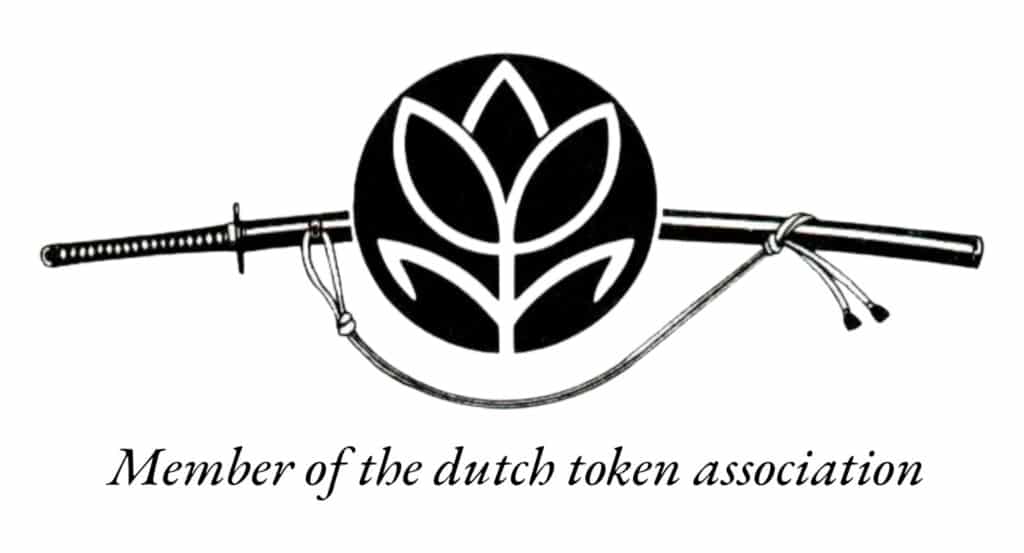Description
Japanese Samurai Daishō Kono Sadamitsu (Gassan School)
NBTHK Tokubetsu Hozon Sō-no-Kurikara Horimono
A very rare matched daishō (katana & wakizashi) by Bizen-ju Kono Sadamitsu, both dated Showa 59 (1984) and awarded NBTHK Tokubetsu Hozon together as a set.
Sadamitsu (real name Kono Hiroshi, b. 1950) is a leading Gendai smith from Fukuoka. He first learned from his father Kunimitsu, then entered the forge of Living National Treasure Gassan Sadaichi (Gassan Teiichi), head of the modern Gassan line and grandson of the famous Gassan Sadakazu.
Among Sadaichi’s students, Sadamitsu was regarded as one of the most skilled; he was granted the character “Sada” (貞) from his master and from then on signed Sadamitsu.
His swords are famed for their combination of beautiful Gassan-style jigane and fearsome cutting ability. Because of this, he is often nicknamed “Ima Kotetsu” – the modern Kotetsu and enjoys a very high reputation among martial artists and tameshigiri specialists.
This is a powerful, impressive daishō, clearly conceived as a true samurai pair with matching koshirae.
Samurai Tradition of Kurikara Carvings
The kurikara motif the dragon of Fudō Myō-ō coiling around the sword of wisdom has a long history on samurai swords. In classical Koto blades, carvings such as Fudō Myō-ō, suken, and kurikara were especially favored for their religious and protective meaning.
-
The sword represents the “Sword of Wisdom” that cuts through ignorance and the three poisons (greed, anger, delusion).
-
The dragon symbolises transforming and consuming evil or impure thoughts. Together they express the battle between ignorance and enlightenment and the protection of the Dharma.
Many high-ranking samurai favoured swords with Fudō and kurikara carvings as personal talismans. A famous example is the Fudō Masamune tantō, with Fudō and a kurikara dragon carved on the blade, which was owned by the Owari Tokugawa family and is now an Important Cultural Property in the Tokyo National Museum.
Your Sadamitsu daishō continues exactly this tradition: a warrior’s protective motif expressed in a refined modern Gassan style.
Horimono Sō-no-Kurikara
Both blades are carved on the shinogi-ji with a long, flowing sō-no-kurikara motif.
In horimono terminology, sō-no-kurikara is the most stylised form of the kurikara dragon: the dragon and the sword become dynamic, calligraphic lines with hooks and curves, rather than a naturalistic dragon wrapped around a clearly drawn ken.
-
The carving is personally executed by Kono Sadamitsu, showing his mastery not only as a smith but also as a blade carver.
-
The lines rise and coil along the blade, suggesting the dragon of Fudō Myō-ō merging with the sword of wisdom.
-
Matching sō-no-kurikara on both katana and wakizashi underlines the unity of this daishō and its spiritual theme of protection and victory over adversity.
-
Highlights
-
Matched daishō katana & wakizashi by Bizen-ju Kono Sadamitsu
-
NBTHK Tokubetsu Hozon (Special Preservation) as a pair
-
Gassan school lineage senior disciple of Living National Treasure Gassan Sadaichi
-
Granted the use of the character “Sada” in his mei
-
Both blades with sō-no-kurikara horimono, carved by Sadamitsu himself
-
Famous for exceptional cutting ability often called “Ima Kotetsu” (modern Kotetsu)
-
Matching koshirae with dragon-themed tsuba and fuchi-kashira
-
Wide, thick, powerful sugata excellent presence in hand and on display
-
Modern Showa work (1984) with strong traditional spirit
-
Swordsmith Kono Sadamitsu (Kono Hiroshi)
-
Born: Showa 25 (1950), Fukuoka Prefecture
-
Teacher: Initially his father Kono Kunimitsu (Sa Kunimitsu); later studied forging and blade-carving under Living National Treasure Gassan Sadaichi (Teiichi).
-
Name: After his skill was recognised, Sadaichi granted him the character “貞 (Sada)”, and he began signing “Bizen-ju Kono Sadamitsu saku.”
-
Reputation:
-
Pursued the ideal of a sword that “does not bend, does not break, and cuts well.”
-
Highly rated for tameshigiri and iai; many practitioners sought out his blades.
-
Often described in Japan as “Ima Kotetsu” – comparing his cutting ability to the legendary Kotetsu.
-
After his passing, his swords became even harder to find and are now considered scarce and very desirable on the market.
-
This daishō, combining Gassan-style forging, high-level sō-no-kurikara carving, and Tokubetsu Hozon papers, is an excellent example of why Sadamitsu is so highly regarded.
Katana (Long Sword)
-
Blade length: 74.2 cm (2 shaku 4 sun 5 bu)
-
Curvature (sori): 2.4 cm
-
Width at hamachi: 3.45 cm
-
Kasane (moto): 7 mm
-
Width at kissaki: 2.2 cm
-
Kasane (saki): 5.5 mm
-
Mekugi-ana: 1
-
Era: Showa era, AD 1984 (Showa 59)
-
Province: Fukuoka Prefecture (Bizen-ju)
A wide, powerful katana with elegant curvature and a strong kissaki, beautifully complemented by the long sō-no-kurikara carving.
Wakizashi (Short Sword)
-
Blade length: 57.6 cm (1 shaku 8 sun 9 bu)
-
Curvature (sori): 1.8 cm
-
Width at hamachi: 3.45 cm
-
Kasane (moto): 7.5 mm
-
Width at kissaki: 2.45 cm
-
Kasane (saki): 6 mm
-
Mekugi-ana: 1
-
Era: Showa era, AD 1984 (Showa 59)
-
Province: Fukuoka Prefecture (Buzen-ju)
The wakizashi is unusually robust, clearly designed as a true companion blade. Its matching sō-no-kurikara horimono creates a powerful visual and spiritual harmony with the katana.
Koshirae Matching Dragon Motifs
The blades are mounted in matching daishō koshirae, reinforcing their unity as a pair:
-
Tsuba: Decorated with dragon motifs, giving a strong martial and protective feeling.
-
Fuchi-Kashira: Finely worked fittings with dragon details, echoing the kurikara theme of the blades.
-
Overall, the koshirae presents a coherent dragon & Fudō symbolism – dragons on the fittings, sō-no-kurikara on the steel – making this daishō visually impressive both in hand and on display.
A Tokubetsu Hozon daishō with sō-no-kurikara horimono by Bizen-ju Kono Sadamitsu senior disciple of Living National Treasure Gassan Sadaichi and famed as “Ima Kotetsu” – is a truly rare opportunity for the advanced collector of modern samurai swords and Gassan-school masterpieces.
